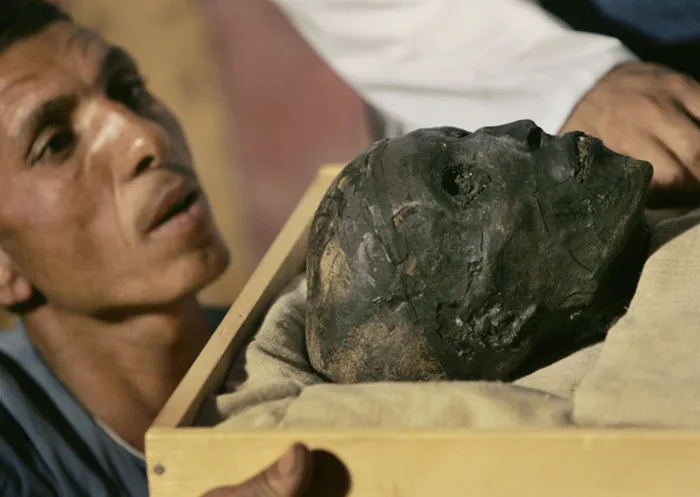King Tut’s ‘moobs’ clue to his early death?

File photo: An archaeological worker looks across at the face of the linen-wrapped mummy of King Tut as he is removed from his stone sarcophagus. File photo: An archaeological worker looks across at the face of the linen-wrapped mummy of King Tut as he is removed from his stone sarcophagus.
London - His demise has variously been blamed on murder, leprosy, a snake bite or a fall from a chariot.
Now a new theory about the death of Tutankhamun has been put forward by a British scientist who believes that the young pharaoh’s “man boobs” may hold the key.
Hutan Ashrafian, lecturer in general surgery at Imperial College London, said historians have missed evidence that the boy king of Egypt, who died mysteriously 3,000 years ago, may have had a type of epilepsy that lay behind his “feminised physique” and could have caused him to die in a fall.
He says sculptures and paintings of the pharaoh, and four of his close male relatives, show they had unusually large breasts and wide hips. Not only that, but all of these kings died relatively young suggesting they may have shared an inherited condition, Mr Ashrafian says.
In a fresh review of evidence, he found historical accounts hint at what this was, as two of the five pharaohs are associated with stories of religious visions. He believes they had a form of epilepsy in the brain’s temporal lobe in which seizures can cause vivid hallucinations.
This would also explain their feminine features, as the temporal lobe is connected to parts of the brain involved in the release of sex hormones.
Since Tutankhamun’s tomb was discovered in 1922, the cause of his death has been the subject of intense debate. Mr Ashrafian says several statues of Tutankhamun who died aged 18 or 19, reveal “prominent” gynecomastia, the medical term for man boobs which is rare in depictions from the period.
His mummified body was too damaged by those who found it to know, but recent X-rays showing broken bones suggest he died in a fall, which could have been brought on by a seizure, he said in the journal Epilepsy and Behaviour. - Daily Mail